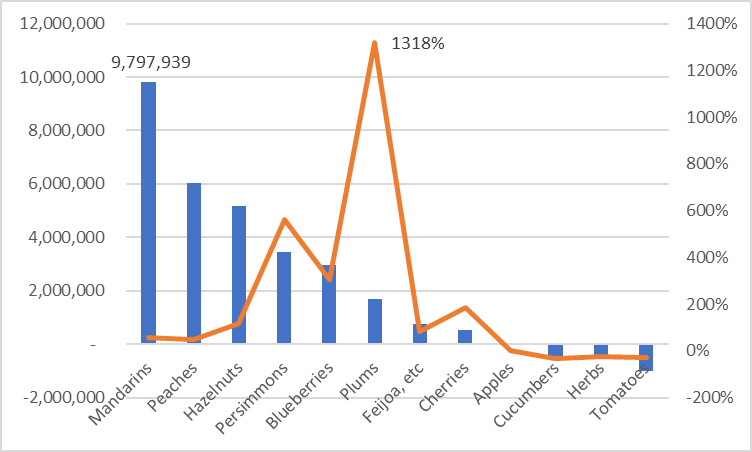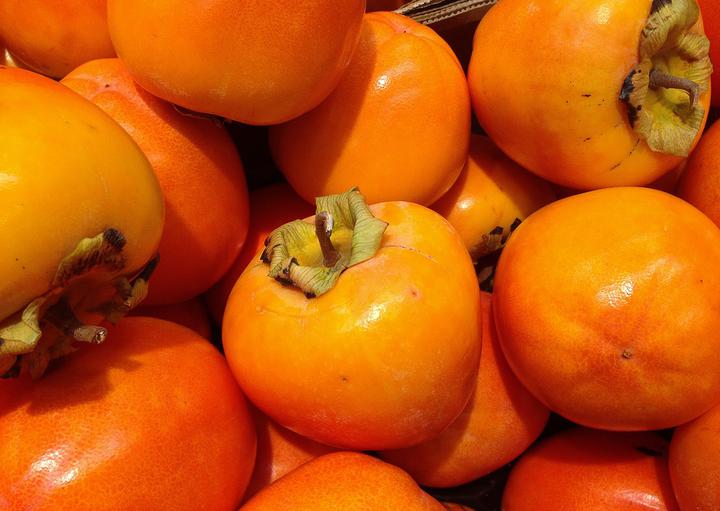According to EastFruit analysts, there was a sharp increase in fruit and vegetable imports from Georgia to Russia in 2020. During the year, Georgia managed to earn a record $81 million from the exports of fresh vegetables, fruits, berries, and nuts to Russia, which was 62% more than in 2019.
The following graph shows the rise and fall of Georgian exports to Russia in US dollars and percentages.

As we can see from the graph, the largest increase in revenue was due to the supply of mandarins, which is Georgia’s primary export to Russia. Their exports grew by 57% or nearly $10 million in a year and reached $27 million.
Read also: Horticulture of Georgia 2020: surging exports of nuts, apples, blueberries, peaches, and mandarins
Also, Georgian exports of peaches and nectarines to Russia increased very sharply by 49%. However, for rating percentages, the absolute leader in the increase in exports was for plums: its exports grew 14 times over a year! Also, there was an almost sevenfold increase in the exports of persimmons, fourfold of blueberries, threefold of sweet cherries, and more than a twofold increase in the exports of hazelnuts.
The exports of exotic fruits and vegetables such as feijoa, pomegranate, etc., also increased by an impressive 85%. This means that Georgian entrepreneurs continue to search and successfully find various niches in the fresh produce business.
Exports of vegetables and greenhouse products from Georgia to Russia continued to stagnate. According to EastFruit‘s estimates, the cost of energy for producing greenhouse products was the highest in Georgia and Ukraine for the region, making it less competitive than for the suppliers of these vegetables from Central Asian countries. In particular, herbs can be grown in the open field even in winter in Uzbekistan and Iran. Also, less energy is needed to heat greenhouses in these countries since the average temperatures are higher and energy prices are much lower.
Accordingly, in 2020, the exports of cucumbers and tomatoes from Georgia to Russia fell by about a third, and herbs by a quarter. FAO and EBRD experts drew attention to issues growing and exporting herbs from Georgia back in 2018 highlighting that Georgia needed to look for alternatives to the Russian herbs market and to expand the product range.
The use of the site materials is free if there is a direct and open for search engines hyperlink to a specific publication of the East-Fruit.com website.




